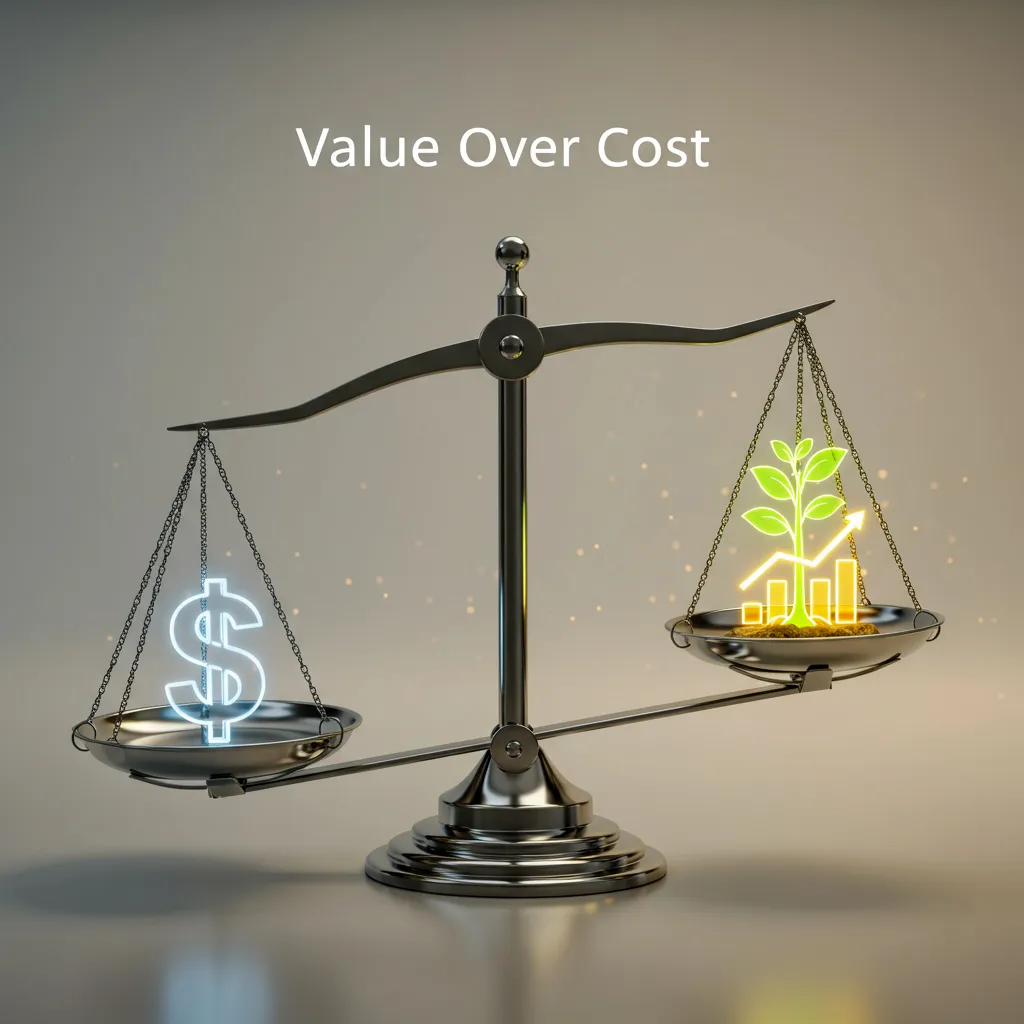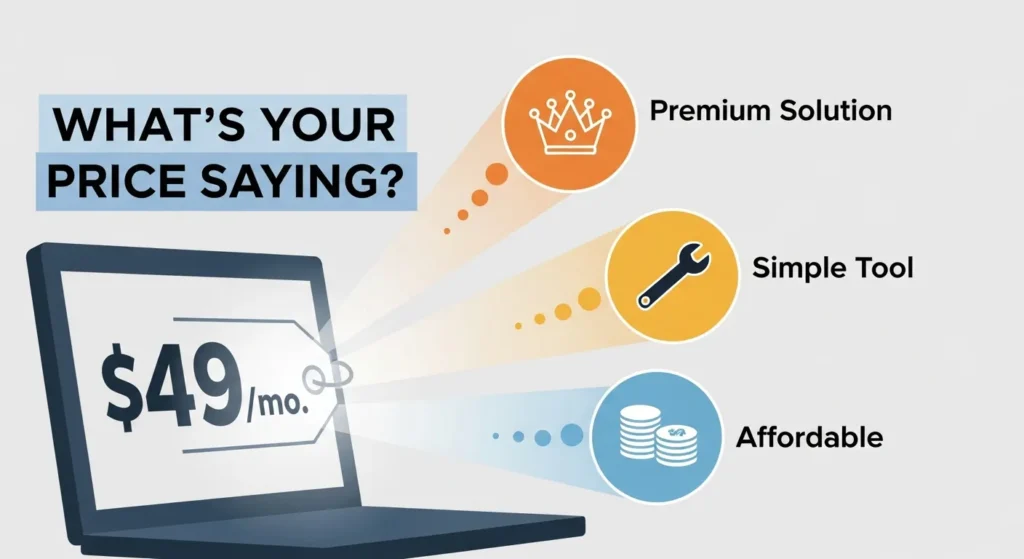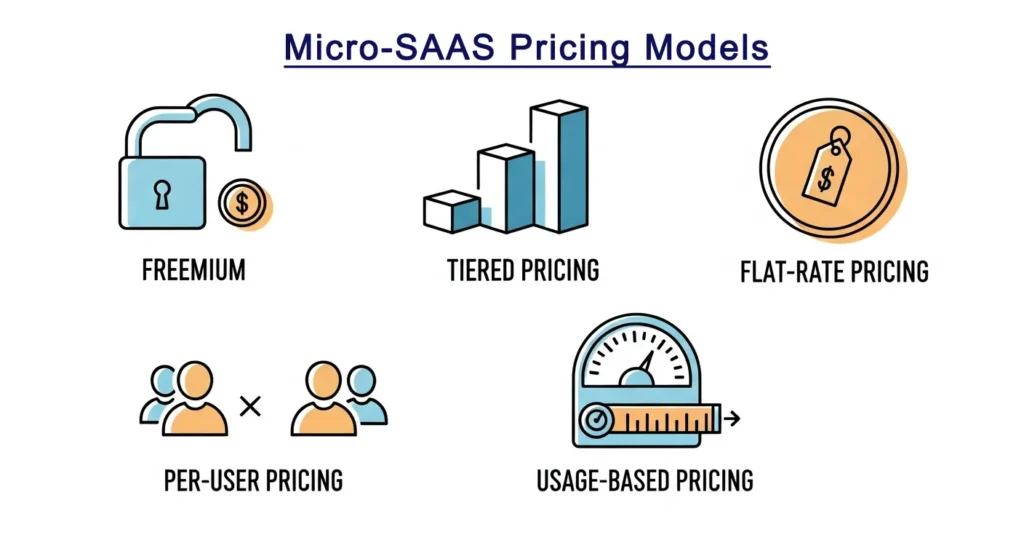Choosing the right price for your micro SaaS is one of the most important decisions you’ll make. It’s not just a random number you pick; your pricing strategy directly influences who your customers are, how much money your business makes, and how fast you can grow. Getting it right is key to building a profitable micro SaaS that lasts. This article will help you understand the best ways to price micro saas products and how to choose a model that works for you.
Pricing is a critical component of a successful micro SaaS venture, and it’s just one part of the bigger picture. To understand how it fits into your entire business strategy, refer to our ultimate guide: The Ultimate Guide to Micro SaaS: From Idea to Exit.
Why Pricing Matters So Much
Your price sends a message. A low price might suggest your product is a simple tool, while a high price can suggest it’s a powerful, premium solution. A good price also makes your business sustainable. If your product costs you more to run than you make from each customer, you can’t grow. A smart pricing strategy ensures you earn more than you spend, allowing you to invest in a better product and reach more people.
Common Micro SaaS Pricing Models
There are several popular micro saas pricing models. The one you choose should fit your product and your target audience.
Freemium Model
This is a very common model where you offer a basic version of your product for free, and users can pay to unlock extra features, more storage, or higher usage limits.
- How it works: Think of a simple photo editor app where you can use the basic tools for free, but you have to pay to use special filters or effects. The free version attracts a large number of users, and a small percentage of them will eventually upgrade to a paid plan.
- Best for: Products with a wide appeal that are easy to try and understand. It’s a great way to attract a lot of users and get feedback.
Tiered Pricing
Tiered pricing lets you offer different packages at different prices. Each package, or “tier,” usually comes with different features or usage limits.
- How it works: A simple plan might be for one person and include basic features. A middle-tier plan might be for a small team and include more features. A top-tier plan might be for a large business with all the features and a lot of usage.
- Best for: Products that serve a wide range of customers, from individuals to larger teams. It gives customers a clear choice based on their needs.
Flat-Rate Pricing
Flat-rate pricing is the simplest model of all. You offer one single price for access to all of your product’s features.
- How it works: Every customer pays the same price every month, no matter how much they use the product or how many features they need.
- Best for: Very focused products that solve one main problem and don’t need different levels of features. It’s easy for both you and your customers to understand.
Per-User Pricing
This model is all about the number of people using your product. The more people who use it, the more your customer pays.
- How it works: A small business with five employees using your software would pay for five user licenses. If they hire a new employee, their monthly bill goes up. This is very common for team collaboration software.
- Best for: Products that are designed to be used by a team or a group of people. This model makes the price scale with the value the company gets as more people use it.
Usage-Based Pricing
With this model, customers are charged based on how much they use your product, whether that’s the number of API calls, gigabytes of storage, or a number of automated tasks.
- How it works: A customer who uses your software a little bit pays a small amount, while a customer who uses it a lot pays a higher amount.
- Best for: Products where the value is directly tied to how often or how much a user interacts with it. This can be fair for users but can also make revenue less predictable for you.
How to Set a Profitable Price
Choosing a model is just the beginning. To set a truly profitable micro saas pricing number, you need to think about your business’s value.

- Price Based on Value, Not Just Cost: Don’t just look at how much it costs you to run your software and add a little bit on top. Instead, think about the value you provide to your customers. If your software saves a freelancer ten hours of work a month, and their time is worth $50 an hour, your product is worth at least $500 to them. You should price it to capture some of that value. This is called value-based pricing, and it’s the best way to ensure you are earning what you are worth.
- Know Your Competitors: While you shouldn’t just copy what your competitors are doing, it’s a good idea to know their prices. This gives you a starting point and helps you see what the market expects to pay.
- Consider Your Customer’s Perspective: How does your customer feel about your price? Is it simple to understand? Does it make sense for the problem you are solving? Making it easy for customers to understand your pricing is a very important step.
Pricing and Your Business Growth
Remember that your pricing strategy doesn’t exist in a vacuum. It directly impacts your key business metrics. A higher price can lead to a smaller number of customers but can also result in higher Monthly Recurring Revenue (MRR) per customer. A lower price might lead to a lot of customers but with a lower total LTV (Customer Lifetime Value). We discuss these relationships in our guide on The Most Important Metrics to Track for Micro SaaS Success.

Your pricing also directly affects your marketing. A low-priced product might be easier to market widely, while a high-priced product may require more personal sales and a focus on showing its high value. You can learn more about how pricing influences your marketing approach in our guide on Finding & Reaching Your Target Customers: Micro SaaS Marketing Strategies.
Final Thoughts on Your Pricing Strategy
Pricing your micro SaaS is a careful balance between being affordable and being profitable. It’s not a decision you make once and forget about. As your product grows and provides more value, you can re-evaluate your pricing to match. By starting with a thoughtful approach and being open to adjusting, you can find the perfect price that supports your business and delivers great value to your customers.

